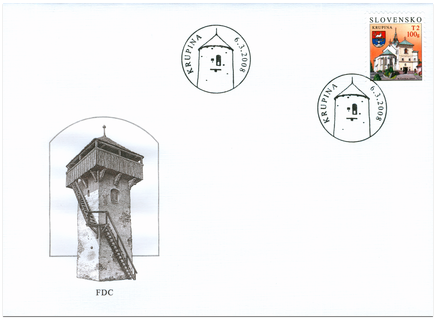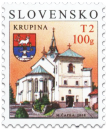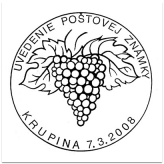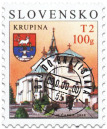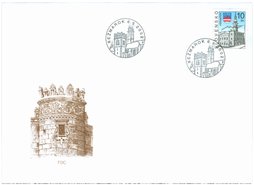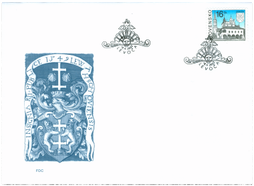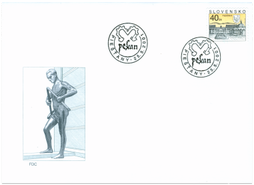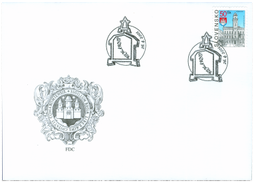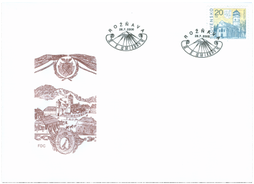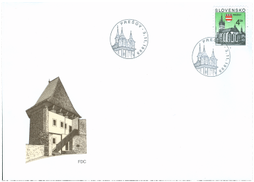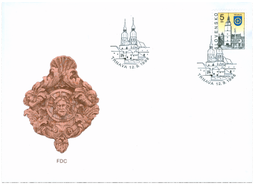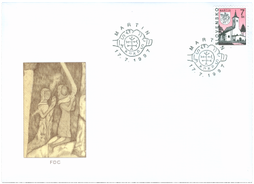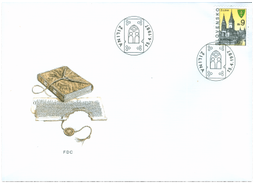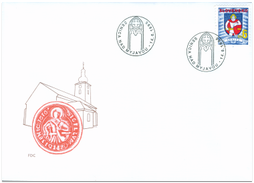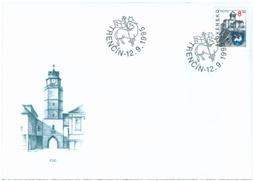FDC 415 Date of issue
06.03.2008
T2 100 g responds to the rate of postage of the 2nd class up to 100 g - domestic servis. © Slovak Post, 2008 The town of Krupina is situated in the Krupina uplands, 279 metres above sea level, on an ancient road connecting the valleys of the Ipeľ river and the Hron river, in the wider European context the area of the central Danube with southern Poland. The origins of the permanent settlement of the region date back to the New Stone and Bronze Ages. Approximately from the end of the 5th and the beginning of the 6th century, the majority of the population comprised Slavs, the ancestors of the present day Slovaks. The first written record of the Krupina region originates from the 12th century. In the 13th century, following the discovery of precious metal deposits, Saxons settled in Krupina, introducing new technology and developed municipal law (‘Magdeburg law’). The privileges of a free royal town were awarded to Krupina in approximately 1238. However, the original deed did not survive the Tartar plundering of 1241. The privileges were reinstated by King Belo IV in 1244. After the depletion of precious metal reserves in the Middle Ages, the town went into a period of decline. It regained its significance after 1540, when Ottoman Turks occupied the present region of Hungary, and Krupina was developed into a fortification against Turks in order to defend south-eastern access to rich central Slovakia mining towns. After the end of the Turkish wars and nobles' uprisings (1711), the importance of Krupina waned once more. New development impulses only arose in the second half of the 19th century and especially in the 1920s when Krupina was connected to the rail system. Today, Krupina is a district town predominated by engineering and food industries. The stamp is illustrated with the oldest town building, the Romanesque-Gothic church of the Birth of the Holy Mary, with an old fortification gate in the foreground. The upper left-hand of the stamp features the town’s coat of arms originating from the 13th century. The theme of the first day cover is the unique vartovka (watchtower) from the period of the battle against the Turks. The cancellation depicts one of the town fortifications’ bastions. Anton Hrnko, historian
Show lessSimilar products
FDC 264 Date of issue
06.05.2002
FDC 262 Date of issue
18.04.2002
FDC 235 Date of issue
25.05.2001
FDC 233 Date of issue
26.04.2001
FDC 213 Date of issue
26.07.2000
FDC 166 Date of issue
03.11.1998
FDC 160 Date of issue
12.09.1998
FDC 148 Date of issue
03.03.1998
FDC 124 Date of issue
17.07.1997
FDC 116 Date of issue
15.04.1997
FDC 95 Date of issue
14.06.1996
FDC 77 Date of issue
12.09.1995
© 2024 POFIS - Postal philatelic service. All rights reserved

